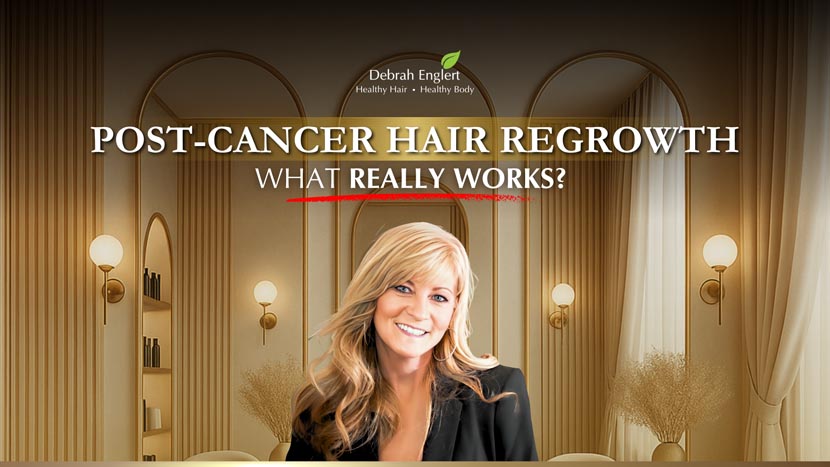POST-CANCER HAIR GROWTH: What Really Works

For many cancer survivors, hair regrowth is both a physical and emotional milestone. The truth is, every person’s journey looks different! Typically, new growth begins 3–6 months after the end of chemotherapy, though texture and thickness may change.
In this guide, we’ll walk through what science, experience, and professionals in hair restoration know about post-cancer regrowth—plus practical tips to help you along the way.
How Long Does Hair Take to Grow Back After Chemo?
Every survivor’s timeline looks different. For most people:
- 3–6 weeks after treatment ends: Soft fuzz may start to appear.
- 2–3 months post-treatment: Hair becomes thicker, though still fine.
- 6–12 months: Noticeable regrowth, sometimes with changes in texture (curly hair may come in straighter, or straight hair curlier).
- 12–18 months: Hair length is often several inches long and ready for shaping into new styles.
Take note: Growth can be uneven. Some areas (like the crown or hairline) may fill in slower, but patience and proper care will help.
What Really Helps Hair Regrowth After Cancer
There’s no single magic product, but consistent, gentle habits go a long way!
1. Protect the Scalp
After chemotherapy, the scalp is often sensitive. Treat it as you would delicate skin:
- After hair loss apply a lightweight moisturizing oil like DoTerra’s Fractionated Coconut Oil mixed with Lavender Essential Oil to soothe and reduce dryness. Available in my Cincinnati, Ohio store.
- As the hair returns, use a scalp treatment system like Ethica’s 3 steps to activate growth and protect the new growth. Available in our store in Cincinnati, Ohio or in our online store.
- Always wear SPF or a hat outdoors—new follicles are sensitive to sun. I like the SPF and other low toxin skincare – Neora which can be purchased by going to denglert.neora.com.
2. Feed Your Hair From Within
Healthy follicles need nutrients. Focus on:
- Protein-rich foods: eggs, beans, fish, lean meats.
- Iron & zinc: found in spinach, lentils, pumpkin seeds.
- Vitamin D: from sunshine or D& K2 supplements (with doctor approval).
- Biotin: supports stronger strands, though not everyone needs this supplementation.
3. Try Proven Therapies
- Scalp Massage: Daily gentle massage increases blood flow.
- Low-Level Laser Therapy (LLLT): FDA-cleared laser caps stimulate follicles.
- Topical Minoxidil (if approved by your doctor): May encourage faster growth.
4. Stay Gentle With Styling
- Avoid tight ponytails, braids, or extensions.
- Use silk pillowcases to reduce friction.
- Air-dry when possible, and limit heat styling.
5. Work With a Professional
At Debrah Englert’s Healthy Hair. Healthy Body, we guide survivors through private consultations, offering safe regrowth strategies and, when needed, interim solutions like toppers or wigs. The key is support—because hair recovery is physical and emotional.
Many survivors describe regrowth as both joyful and challenging. Some love their new “chemo curls,” while others struggle with slow progress. Remember, your worth isn’t tied to your hair. But it’s natural to want to feel like yourself again, and professional guidance can ease the journey.
You don’t need expensive miracle treatments or unrealistic promises to see results. Often, the biggest wins come from small, consistent habits: gentle scalp care, proper nutrition, stress management, and working with experts who understand your journey.
Your hair will grow, but more importantly—you’ve already proven your resilience. Every new strand is a reminder of your strength and recovery.
Email us with questions at Hair@debrahenglert.com or book a virtual or in person consultation with our Hair Restoration Specialist.
